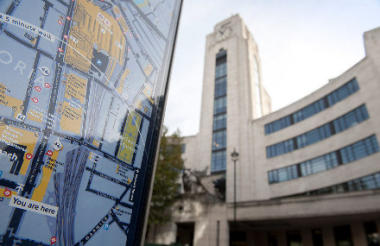Last week's publication of the National Audit Office’s report into Libor funding shows that suspicions about the distribution of funding lacking transparency were correct, says Alice Sharman.
Recognise this scene? George Osborne, then Chancellor of the Exchequer, standing up at the Budget/Autumn Statement/Remembrance Day event (delete as appropriate) announcing that he has decided to give a large figure of money to this worthy cause which has shown to "embody the best of British values".
All very well except that you don't remember the government opening any applications for funding from these Libor grants. And if you had, you may have wanted to apply yourself.
Questions asked
So how did this funding get allocated? Concerns had been raised over the decision making process behind the distribution of Libor funding from across the sector for years, with people asking the Treasury about its processes getting few answers. This did little to quell fears that money was being handed out on an ad-hoc basis.
Critics suspected that in many cases the funding was handed out to charities and other causes who either were in government's favour, or who had managed to get someone with power to put in a good word. The lack of a clear application process or criteria, and the way the Treasury avoided answering questions, added to this.
The publication of last week's National Audit Office report into the funding has shown that concerns were not unfounded. In many ways things were worse than feared, with the NAO concluding that government is “currently unable to confirm that charities spent all grants as intended”.
However things have changed somewhat from the early days of Libor grant funding, with an application processes now in place.
Personal influence
An interesting finding from the NAO report was that two-thirds of Libor funding that was given out through grants (which was a total of £592m) were awarded following requests for funding made directly to the Chancellor of the Exchequer, then George Osborne.
This echoes Osborne’s own use of language in the awarding of Libor money, when he consistently used phrases such as “personally pledge” which set alarm bells ringing.
Additionally, when the Treasury were repeatedly asked about the criteria and safeguards in place for this funding they would not directly answer and instead said that all applications were judged on “merit”.
Despite assurances that even prior to 2015 HM Treasury was conducting due diligence checks before allocating money, the report states that up until autumn 2016 HM Treasury and MoD did not conduct any formal monitoring to assess how Libor grants had been spent after payment, with neither proactively seeking such information. Additionally, terms and conditions were not even included in grant contracts until the 2015 Autumn Statement.
Although it doesn’t appear that it was only the Treasury and MoD who failed to keep track of Libor money. The Department for Education is unable to demonstrate that £200m pledged for the creation of 50,000 new apprenticeships has been used for that cause.
Fallout from Kids Company
When Kids Company collapsed, there was widepread and very public condemnation of grants awarded by government, and calls for things to change in the world of Libor funding.
At the time PACAC singled out Libor grants as an area for concern and said “that there must be no suggestion that individual ministers have funds under their personal control or are exercising personal patronage".
The government subsequently introduced new grant standards and promised more scrutiny of how funds were used.
Previous NAO investigation
But can the sector be confident things will be better? Government grant funding definitely has more regulation post-Kids Company, following recommendations put forward by PACAC. But is this a wider problem throughout government? It is certainly not a new problem.
A National Audit Office investigation from 2014 found that government's grant funding was undermined by a lack of coordination, with obtaining information on government’s grant funding activities being "challenging because levels of information and transparency vary in different parts of government".
In fact, lots of the concerns raised in the 2014 report are concerningly similar to those raised over Libor grant funding.
Are there more Libor-shaped skeletons?
The Treasury has now directed the MoD to carry out a retrospective review which should reveal if the new process has improved matters and if money has been used appropriately.
It will also check every grant for fraudulent activities and refer any “problematic grants for further investigation or action where appropriate”.
The aim is that, once the review is completed, the Treasury and MoD will hold sufficient information to confirm whether charities spent all grants as intended. It expects this to be completed by the end of the year, so it is a case of waiting and seeing whether they will ever know how the money was really spent.
However, the publication of last week's review, and the fact that it took place following pressure from Parliament and the media, shows that there has at least been some positive development in the government’s previously haphazard distribution of millions of pounds of funding. However, the retrospective review may reveal that there are still more Libor shaped skeletons in the government’s closet.
That concerns over government grantfunding were severe enough to merit yet another NAO report shows that there is still considerable scrutiny of how such money is spent. Charities should be minded to ensure that they are able to account for what they have spent government grant funding on, or risk getting caught in the crossfire.
Related articles












